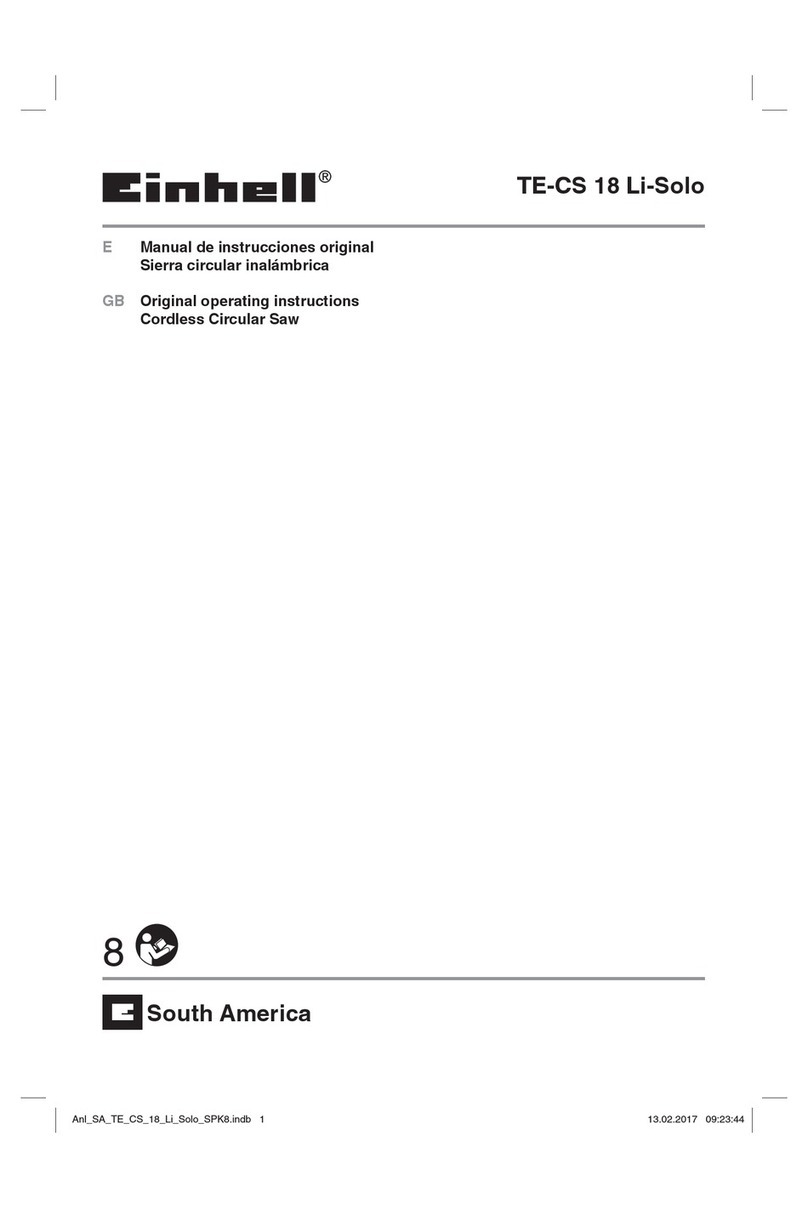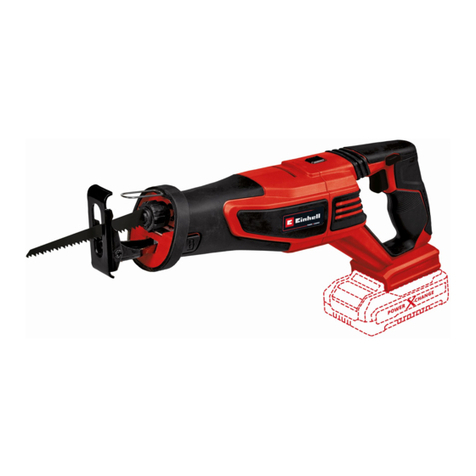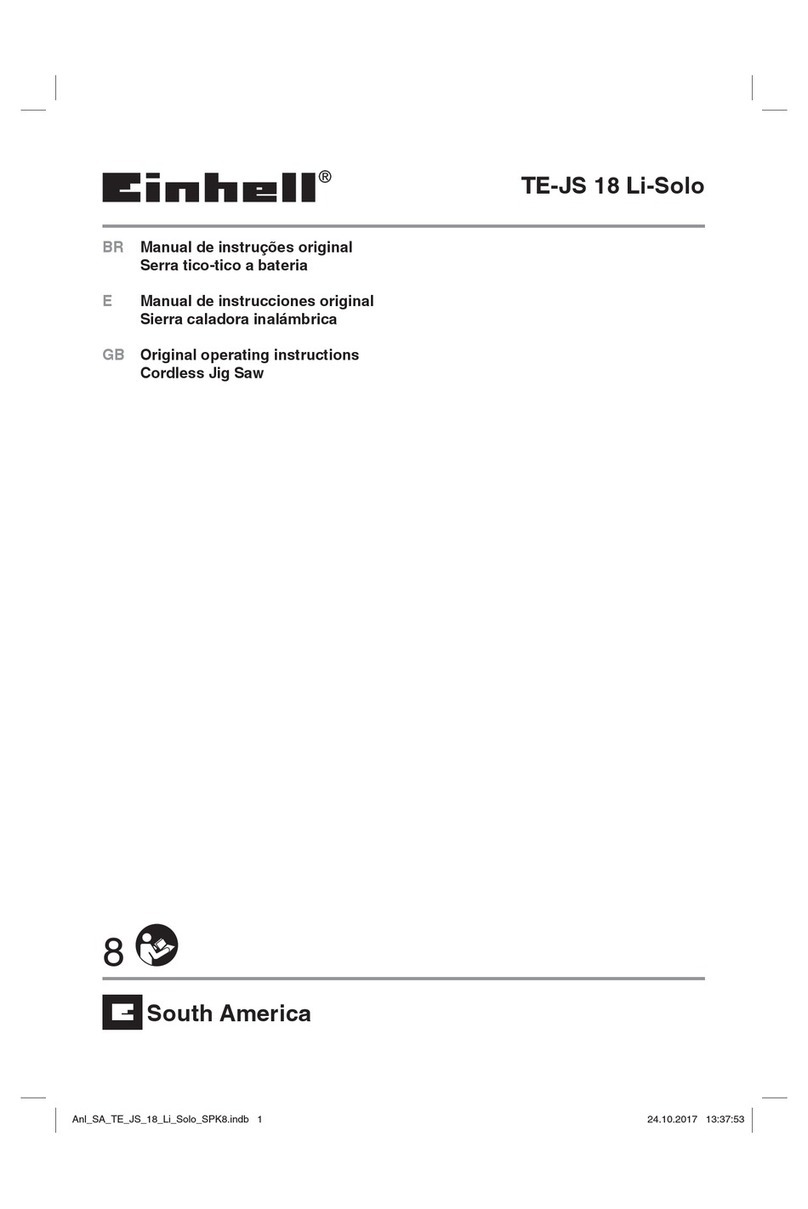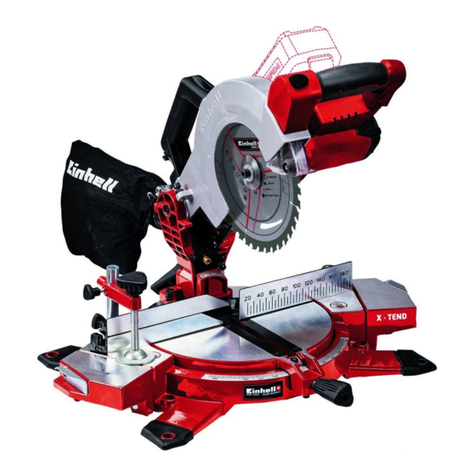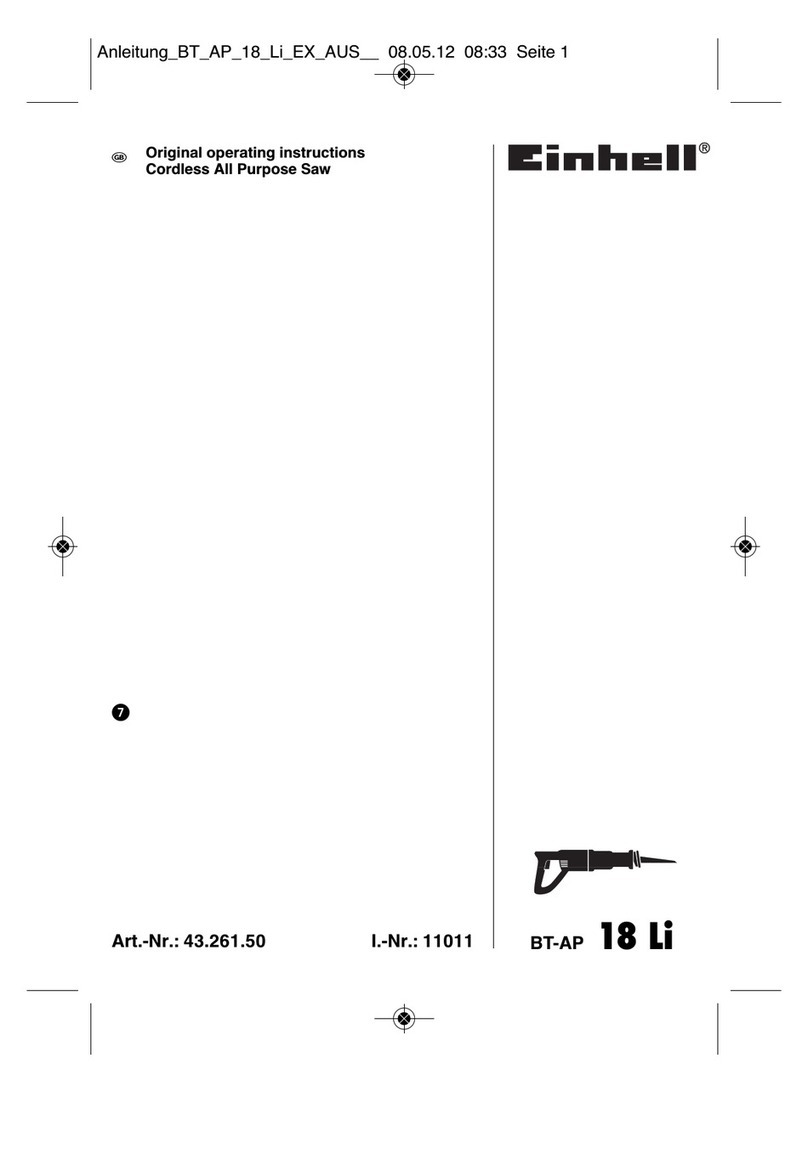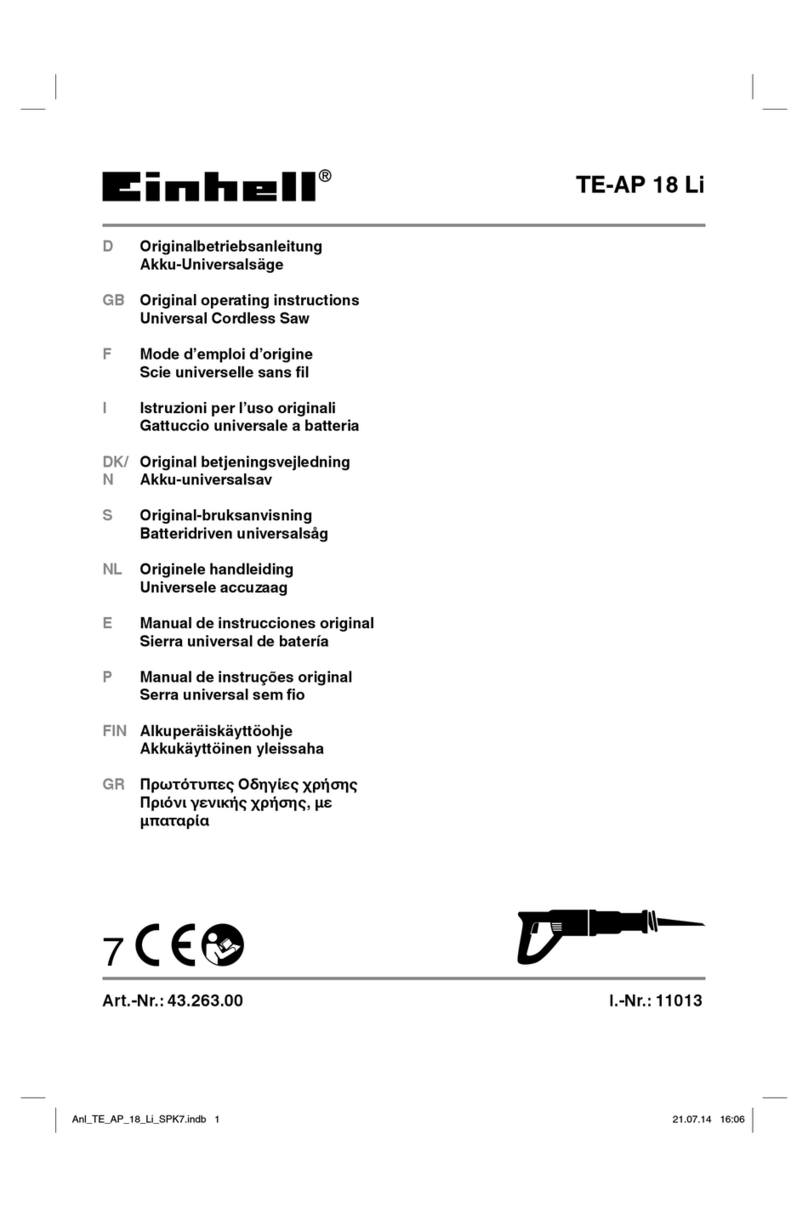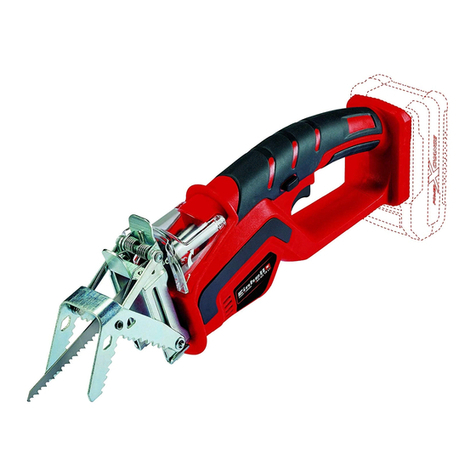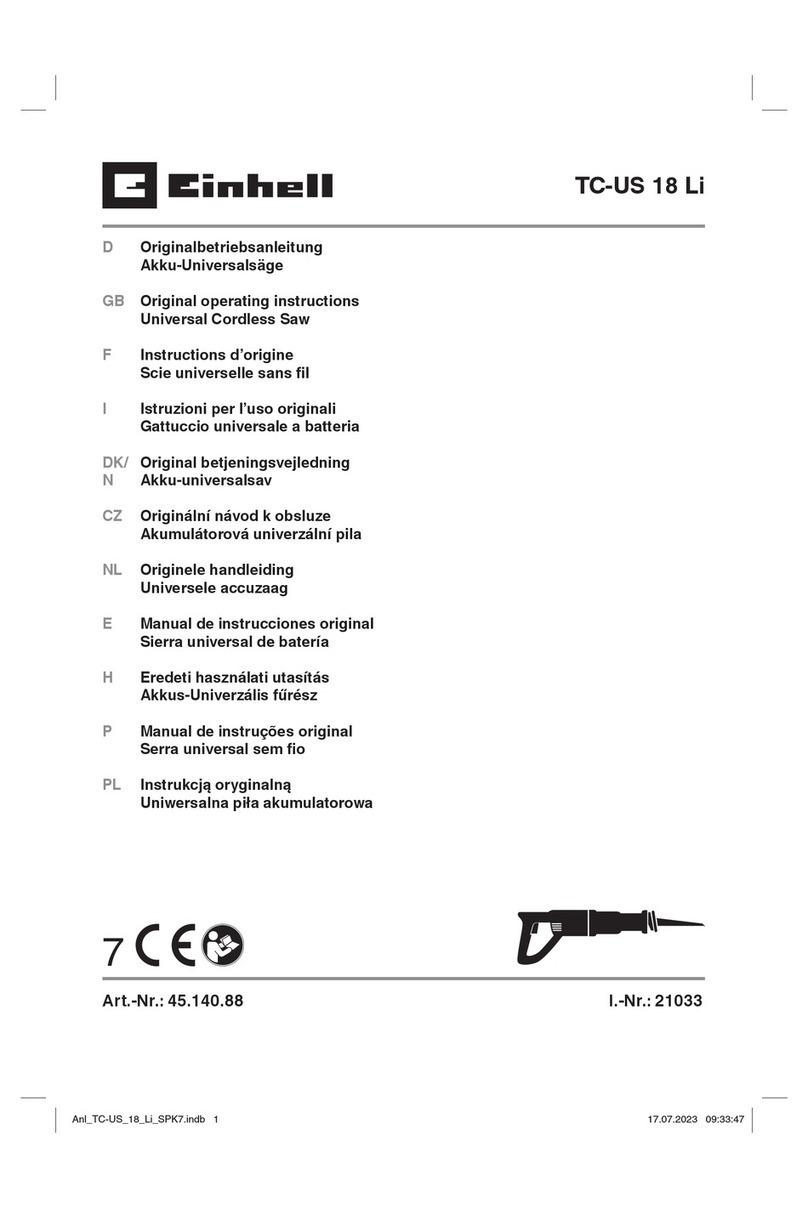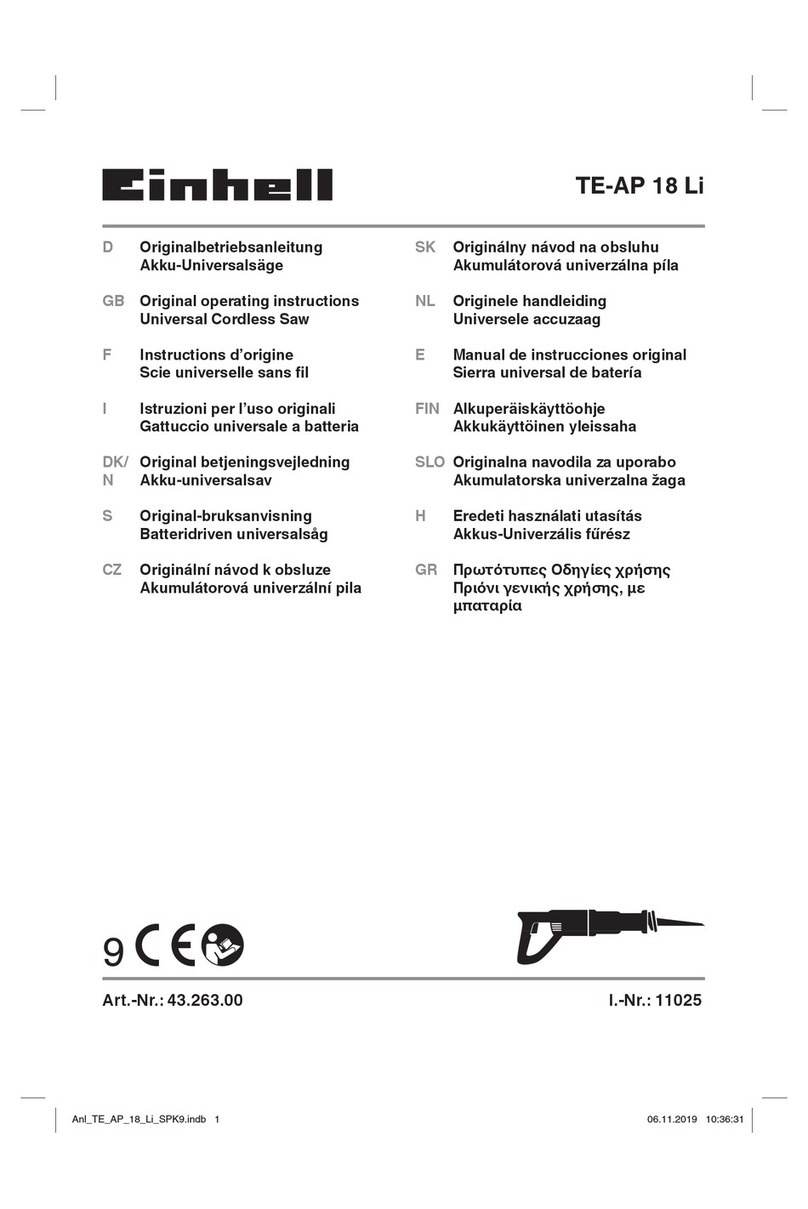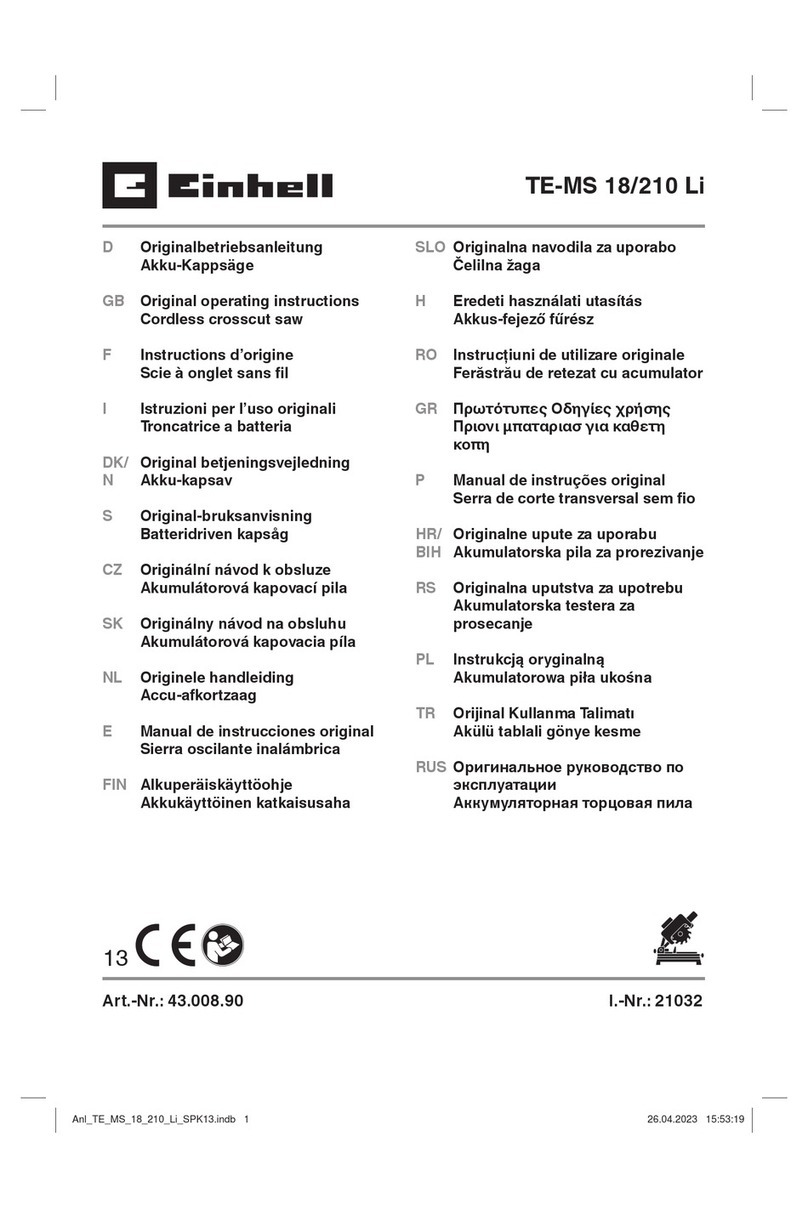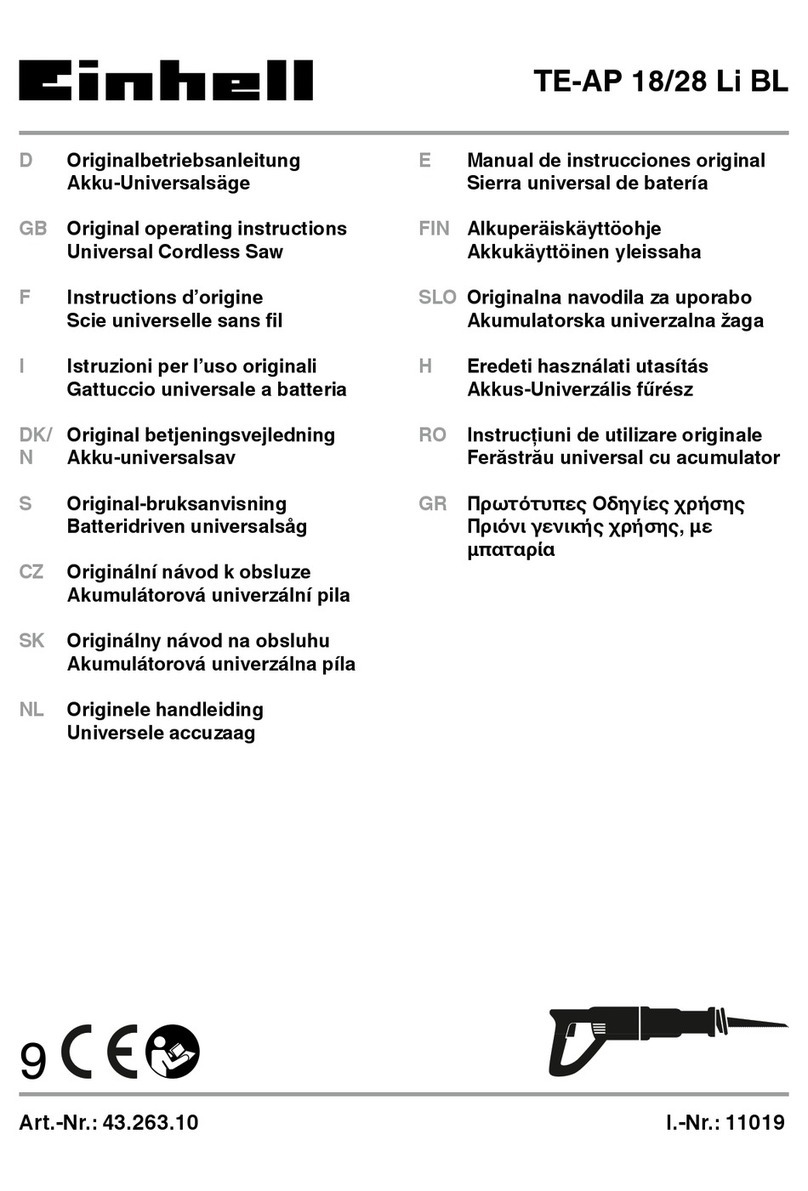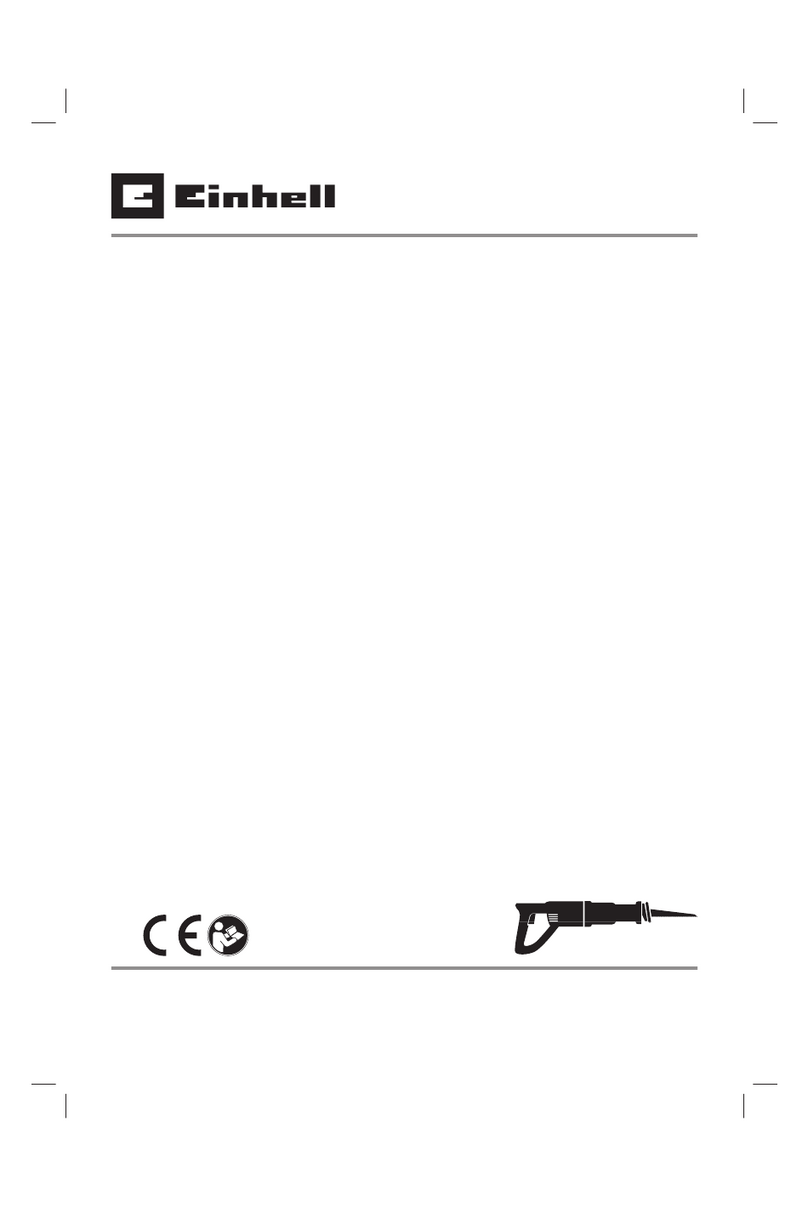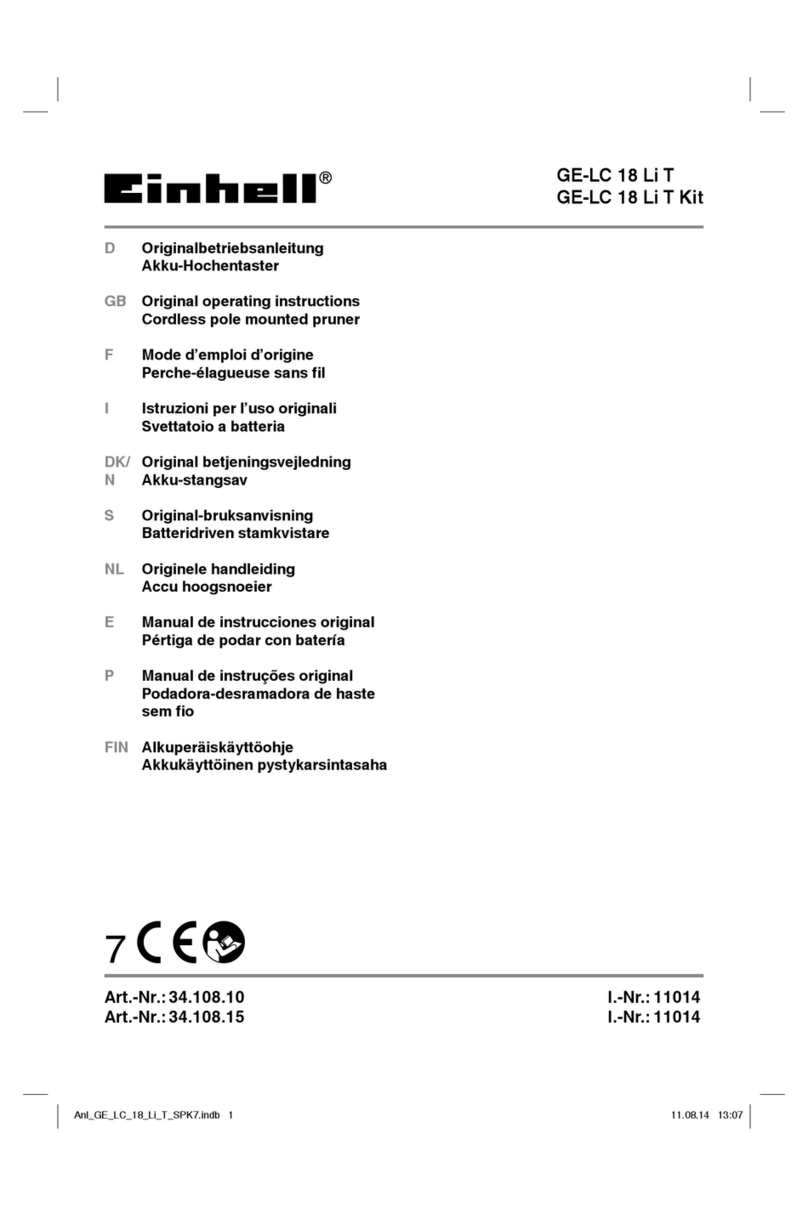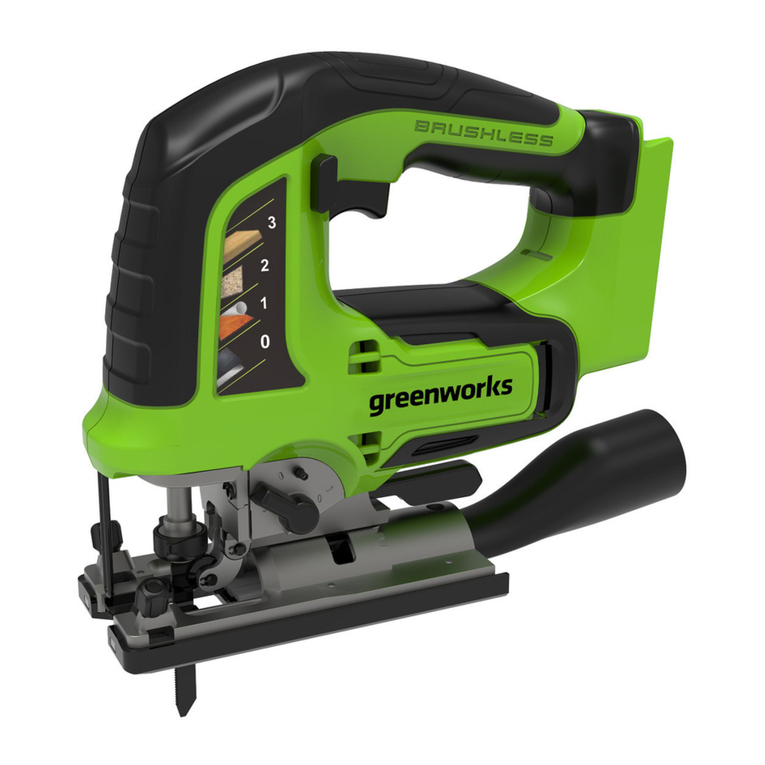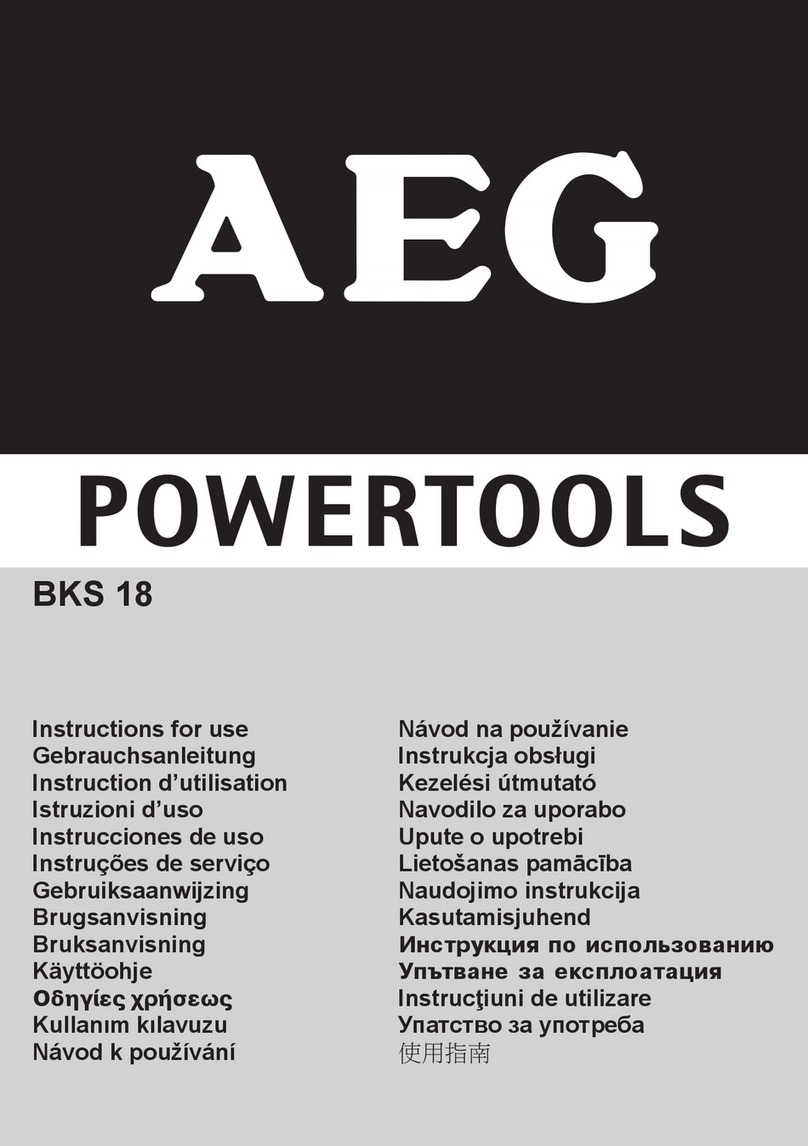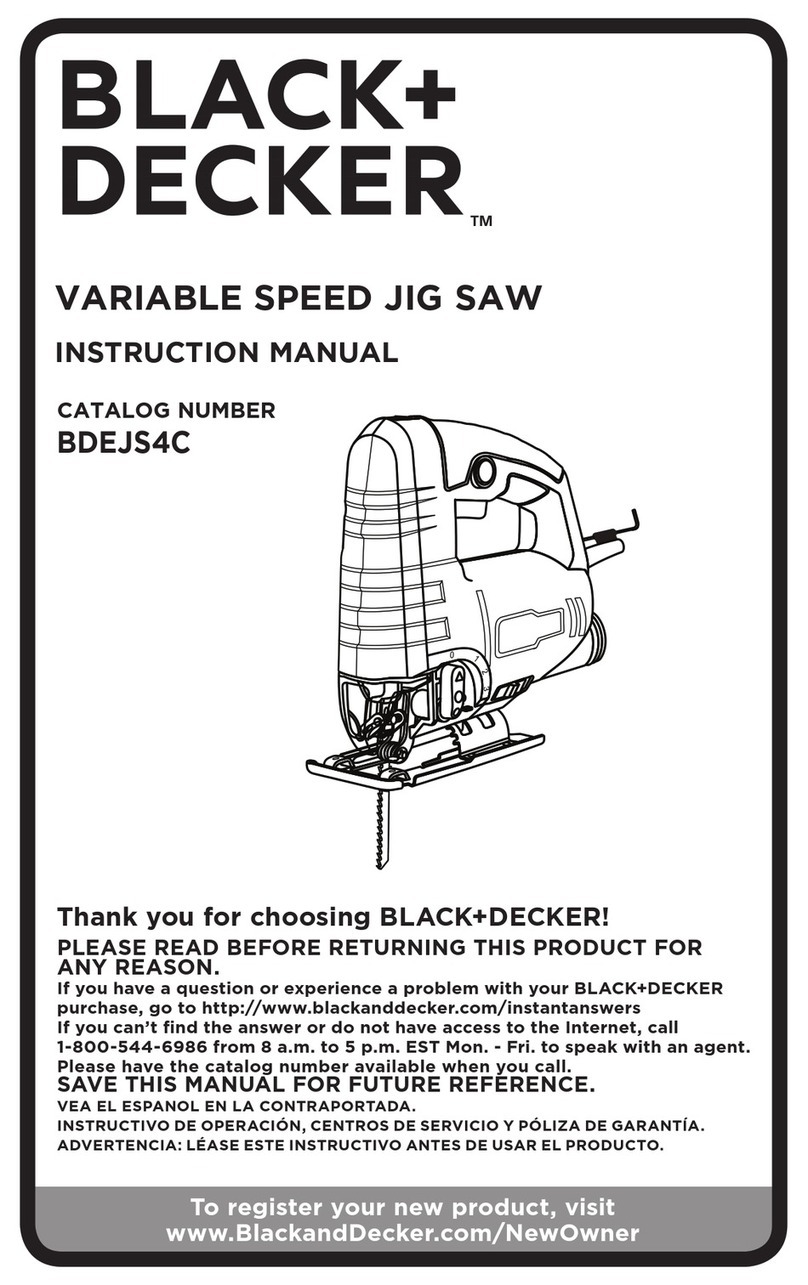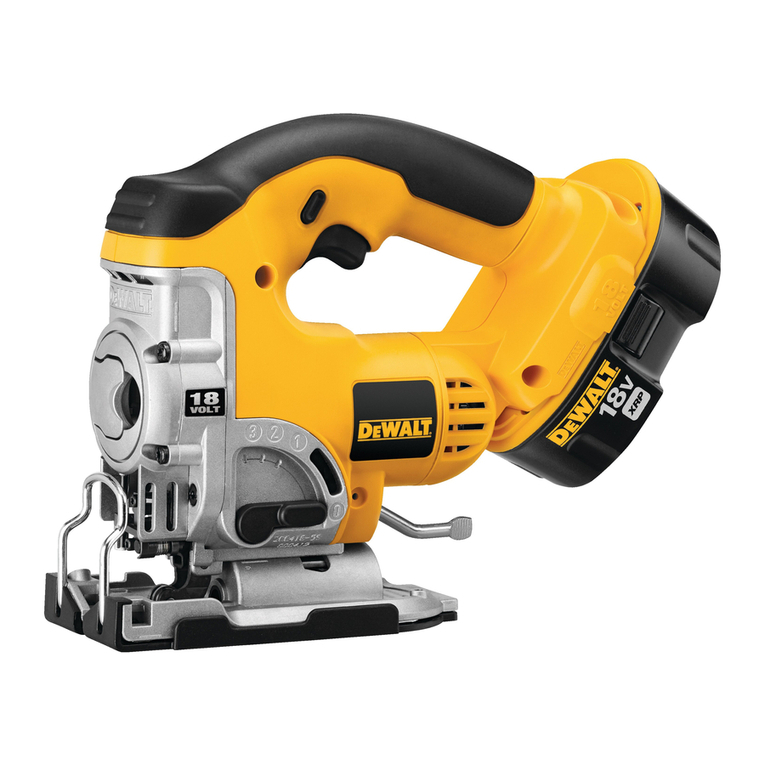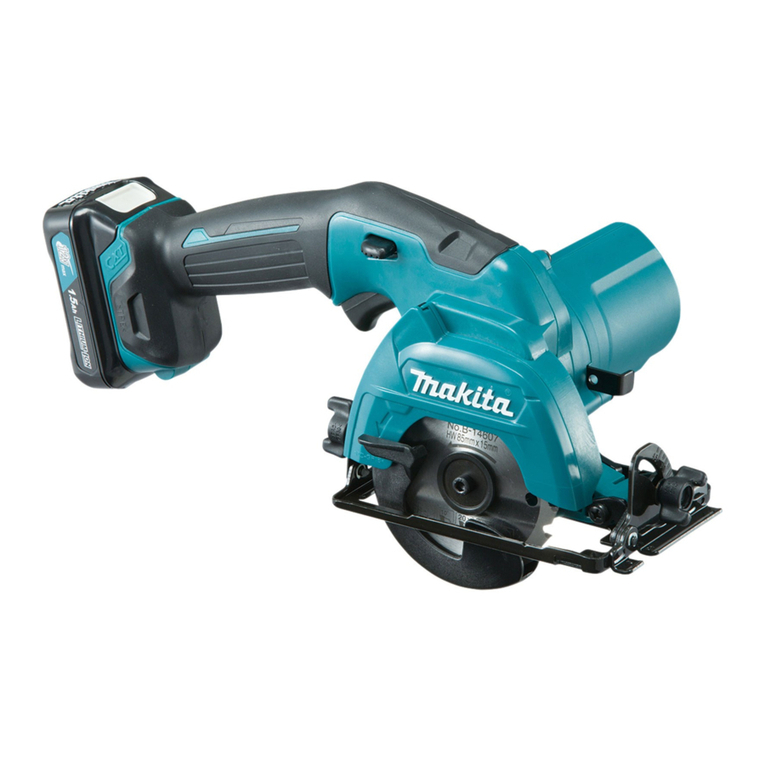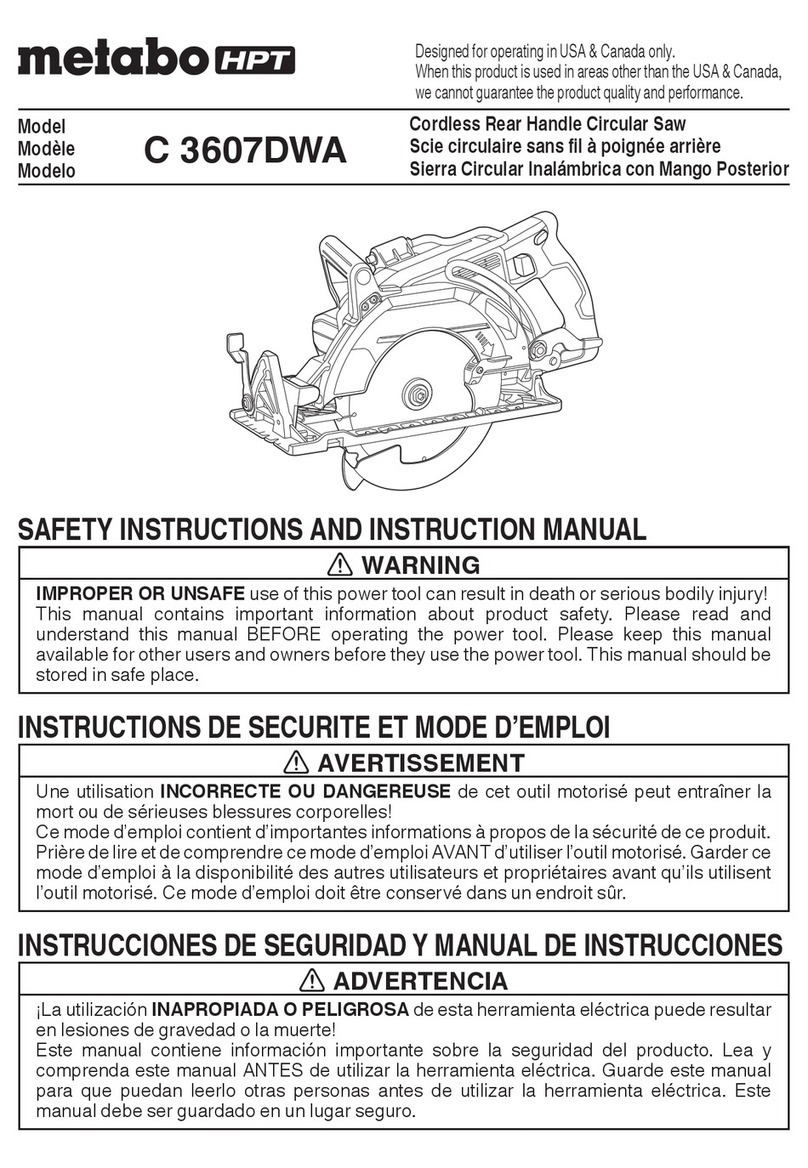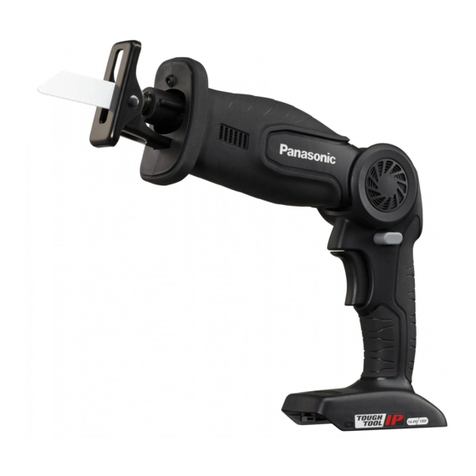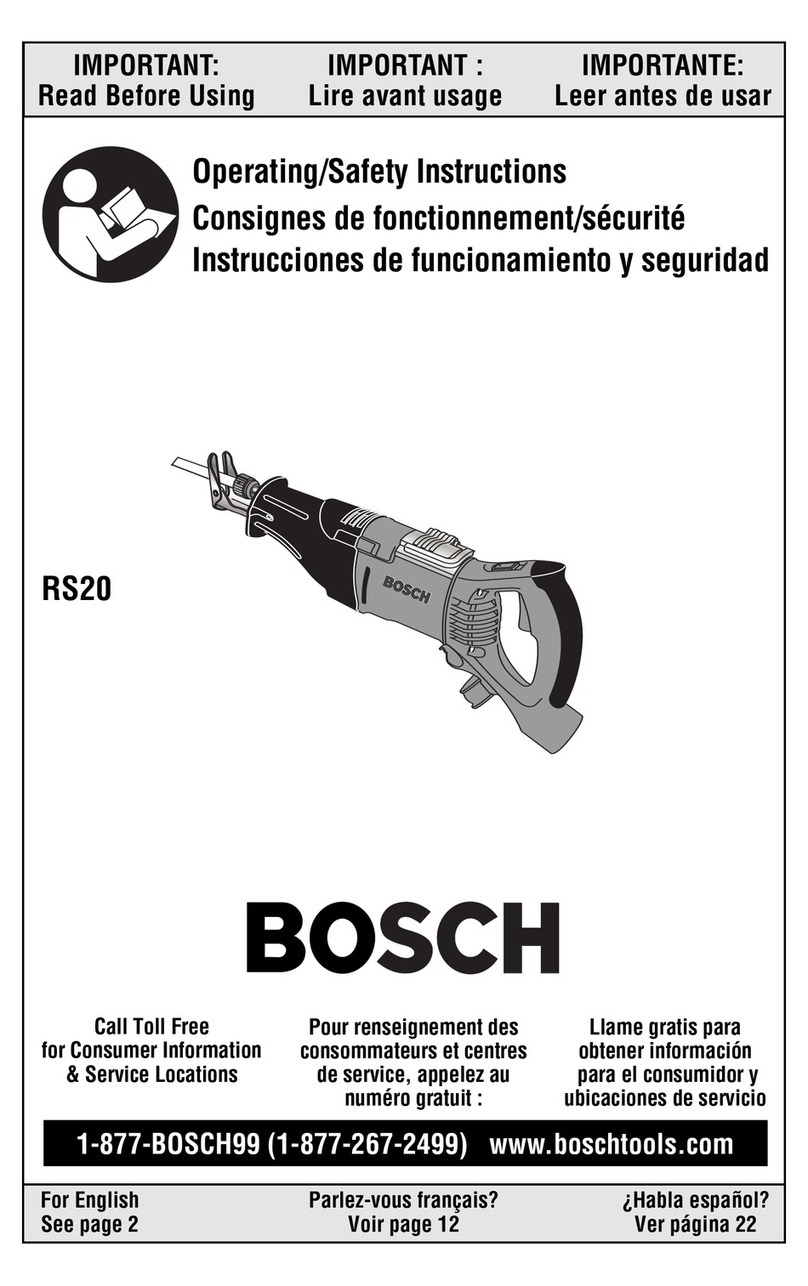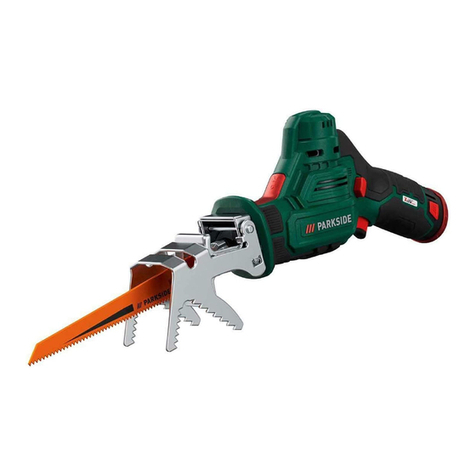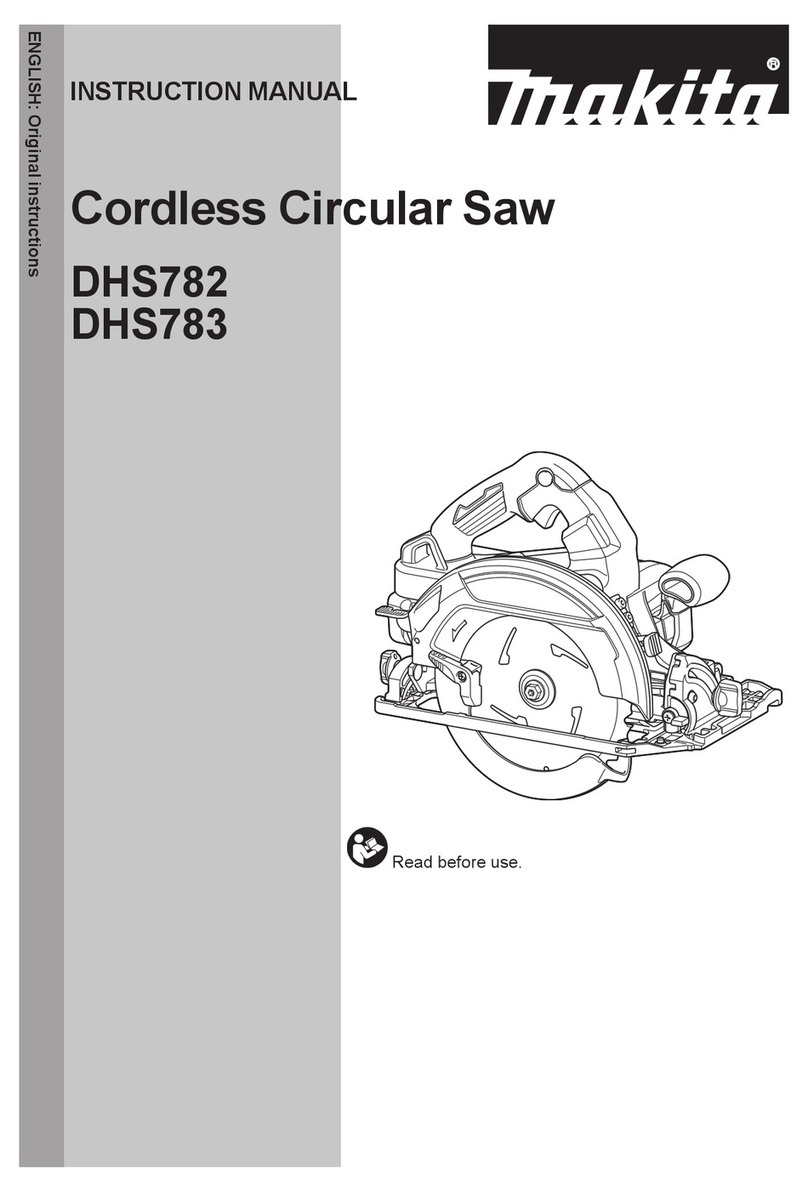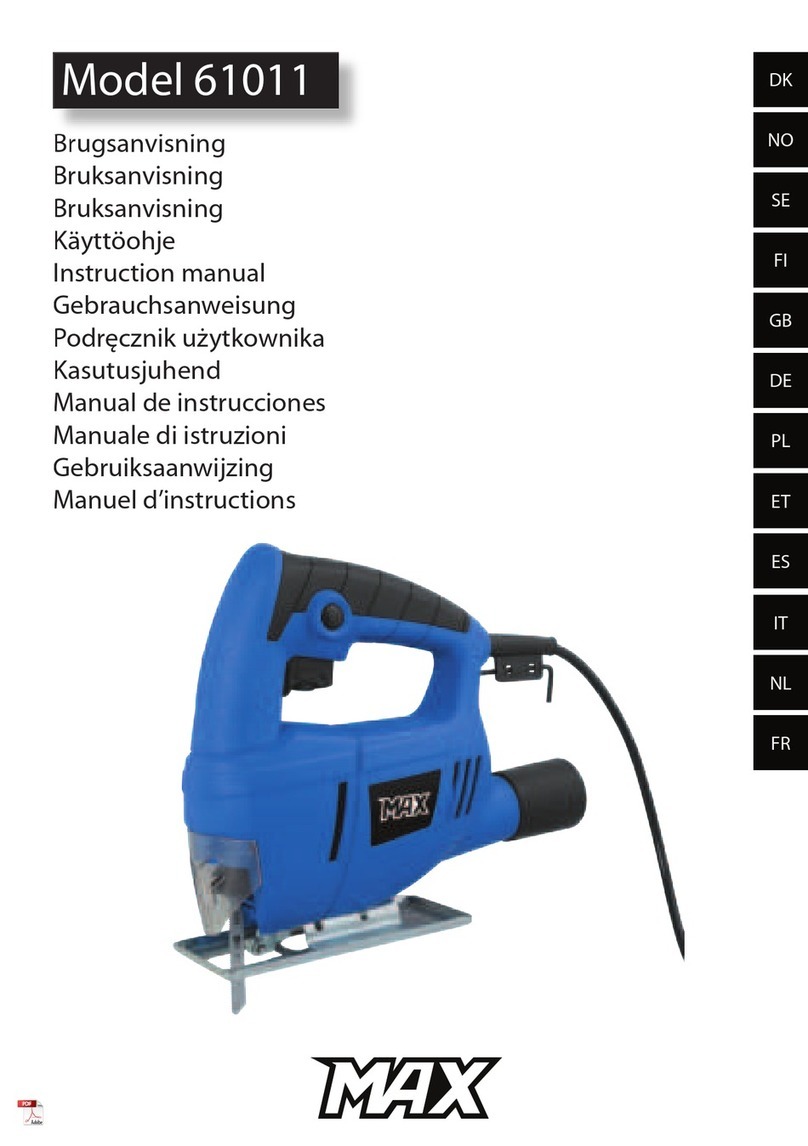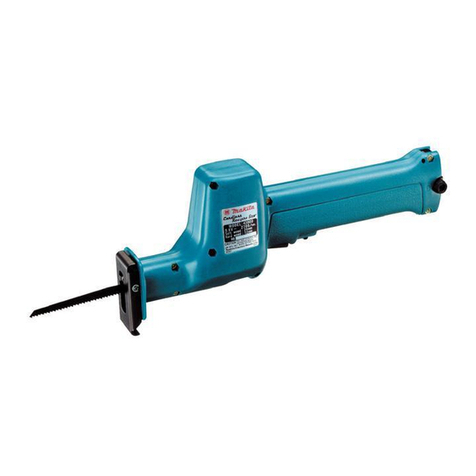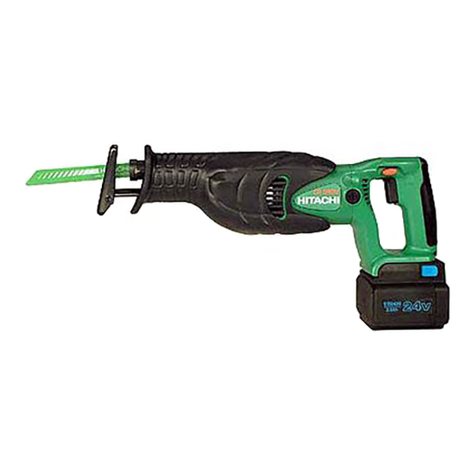GB
6
Important!
When using equipment, a few safety precautions
must be observed to avoid injuries and damage.
Please read the complete operating manual with due
care. Keep this manual in a safe place, so that the
information is available at all times. If you give the
equipment to any other person, give them these
operating instructions as well.
We accept no liability for damage or accidents which
arise due to non-observance of these instructions
and the safety information.
1. Safety regulations
The corresponding safety information can be found
in the enclosed booklet.
CAUTION!
Read all safety regulations and instructions.
Any errors made in following the safety regulations
and instructions may result in an electric shock, fire
and/or serious injury.
Keep all safety regulations and instructions in a
safe place for future use.
Safety instructions for all circular saws
Danger:
a) Do not reach into the sawing area or touch
the saw blade. Hold the additional handle or
the motor casing with your other hand. If you
hold the circular saw in both hands, the saw
blade cannot injure them.
b) Do not reach under the workpiece. The guard
hood cannot protect you from the saw blade
under the workpiece.
c) Adjust the cutting depth to the thickness of
the workpiece. Less than one full tooth height
should be visible under the workpiece.
d) Never hold the workpiece you wish to saw in
your hand or on your leg. Secure the
workpiece on a sturdy surface. It is important
that you secure the workpiece well to minimize
the danger of body contact, the saw blade
jamming or loss of control.
e) Hold the appliance only by the insulated
handles when carrying out work during
which the cutting tool could strike concealed
power cables or its own cable. Contact with a
live cable will also make the metal parts of the
appliance live and will cause an electric shock.
f) Always use a stop or a straight edge when
carrying out longitudinal cuts. This will
improve your cutting accuracy and reduce the
possibility of the saw blade jamming.
g) Always use saw blades of the correct size
and with a suitable mounting hole (diamond-
shaped or round). Saw blades that do not
match the mounting parts of the saw will not
rotate truly and will result in a loss of control.
h) Never use damaged or incorrect saw blade
washers or screws. The saw blade washers
and screws have been specially designed for
your saw to ensure perfect performance and
operational safety.
Additional safety instructions for all saws
Causes of and ways to avoid recoil:
nA recoil is the sudden reaction resulting from a
caught, jammed or incorrectly aligned saw blade
which may result in the saw leaping out of the
workpiece out of control and towards the
operator.
nIf the saw blade becomes caught or jammed in
closing saw gap, it will block and the power of the
motor will cause the saw to leap backwards
towards the operator.
nIf the saw blade is twisted or incorrectly aligned in
the cut, the teeth in the rear saw blade edge may
become caught in the surface of the workpiece,
which results in the saw blade leaping out of the
saw gap and the saw leaping towards the
operator.
A recoil is the result of incorrect or wrong use of the
saw. It can be prevented by suitable precautions, as
described below.
a) Hold the saw firmly in both hands and hold
your arms in a position in which you can
withstand the recoil forces. Always hold the
saw blade to one side. Never hold the saw
blade in a straight line with your body. In the
event of a recoil the circular saw may leap
backwards, but the user can still overcome the
recoil forces if he has taken suitable precautions.
b) If the saw blade jams or the sawing operating
is interrupted for another reason, release the
ON/OFF switch and hold the saw steady in
the workpiece until the saw blade has
reached a complete standstill. Never attempt
to take the saw out of the workpiece or to
pull it backwards whilst the saw blade is
moving or there is a possibility of a recoil.
Find the reason for the blade jamming and rectify
it by suitable means.
c) If you wish to restart a saw that is already in
the workpiece, center the saw blade in the
saw gap and check that the saw’s teeth are
not caught in the workpiece. If the saw blade is
jammed it may move out of the workpiece or
cause a recoil when the saw is restarted.
